Deployment Overview
WatchGuard provides integration instructions to help our customers configure WatchGuard products to work with products created by other organizations. If you need more information or technical support about how to configure a third-party product, refer to the documentation and support resources for that product.
This integration guide describes how to configure a Branch Office VPN (BOVPN) between a WatchGuard Firebox and a Check Point device.
Integration Summary
The hardware and software used in this guide include:
- WatchGuard Firebox with Fireware v12.11.2(B713726)
- Check Point 770 with vR77.20.87(990173072)
Integration Topology
This diagram shows the topology for a BOVPN connection between a Firebox and a Check Point device.

Configure the Firebox
This section shows two different configurations for a policy-based BOVPN, based on the Firebox management tool you use. For a cloud-managed Firebox, go to Configure a policy-based BOVPN for a Cloud-Managed Firebox; for Fireware Web UI, go to Configure BOVPN connection from the Fireware Web UI.
- Log in to WatchGuard Cloud with your WatchGuard Cloud operator account credentials.
If you log in with a Service Provider account, you must select a Subscriber account from the Account Manager. - From the navigation menu, select Configure > VPNs.
- Click Add BOVPN.
The Add BOVPN page opens. - In the Name text box, type a descriptive name.
- From the VPN Connection Type drop-down list, select Policy-Based IPSec to Locally-Managed Firebox / Third-Party.
- From the Address Family drop-down list, select IPv4 Addresses.
- In the Endpoint A section, select your cloud-managed Firebox.
- In the Endpoint B section, in the Endpoint Name text box, type a name to identify the remote VPN endpoint. In our example, we type Check Point.
- Click Next.
The VPN Gateways settings page opens. - From your cloud-managed Firebox side, select the External network.
- From the Check Point side, in the IP or Domain Name or User on Domain text box, type the IP address of the Check Point WAN connection.
- In the Pre-Shared Key text box, type a pre-shared key. This pre-shared key must be the same as the pre-shared key from when you configure the pfSense IPSec VPN Phase 1 settings.
- Click Next.
- From your cloud-managed Firebox side, select the Internal network that you want to be accessible through the VPN tunnel.
- From the Check Point side, click Add Network Resource.
The Add Network Resource dialog box opens. - In the Network Resource text box, type the private network IP address protected by the Check Point. For our example, we type 192.168.13.0/24.
- Click Add.
- For all other settings, keep the default values.
- Click Next.
The Tunnel Routes page opens. - Click Next.
- In the Phase 1 Settings section, from the Authentication drop-down list, select SHA2-256.
- From the Encryption drop-down list, select AES-CBC (256-bit).
- In the SA Life text box, type 24.
- From the Diffie-Hellman Group drop-down list, select Diffie-Hellman Group14.
- In the Phase 2 Settings section, from the Authentication drop-down list, select SHA2-256.
- From the Encryption drop-down list, select AES-CBC (256-bit).
- Select the Use Perfect Forward Secrecy (PFS) check box.
- From the PFS Group drop-down list, select Diffie-Hellman Group14.
- Keep all other settings at their default settings.
- Click Add.
- (Optional) To open the VPN Configuration Summary page in a new browser tab, click View Guide. To establish the VPN connection, configure the required settings for the Check Point.
- Click Finish.
When you add a BOVPN for a cloud-managed Firebox, WatchGuard Cloud immediately creates and deploys a configuration update for the cloud-managed Firebox.
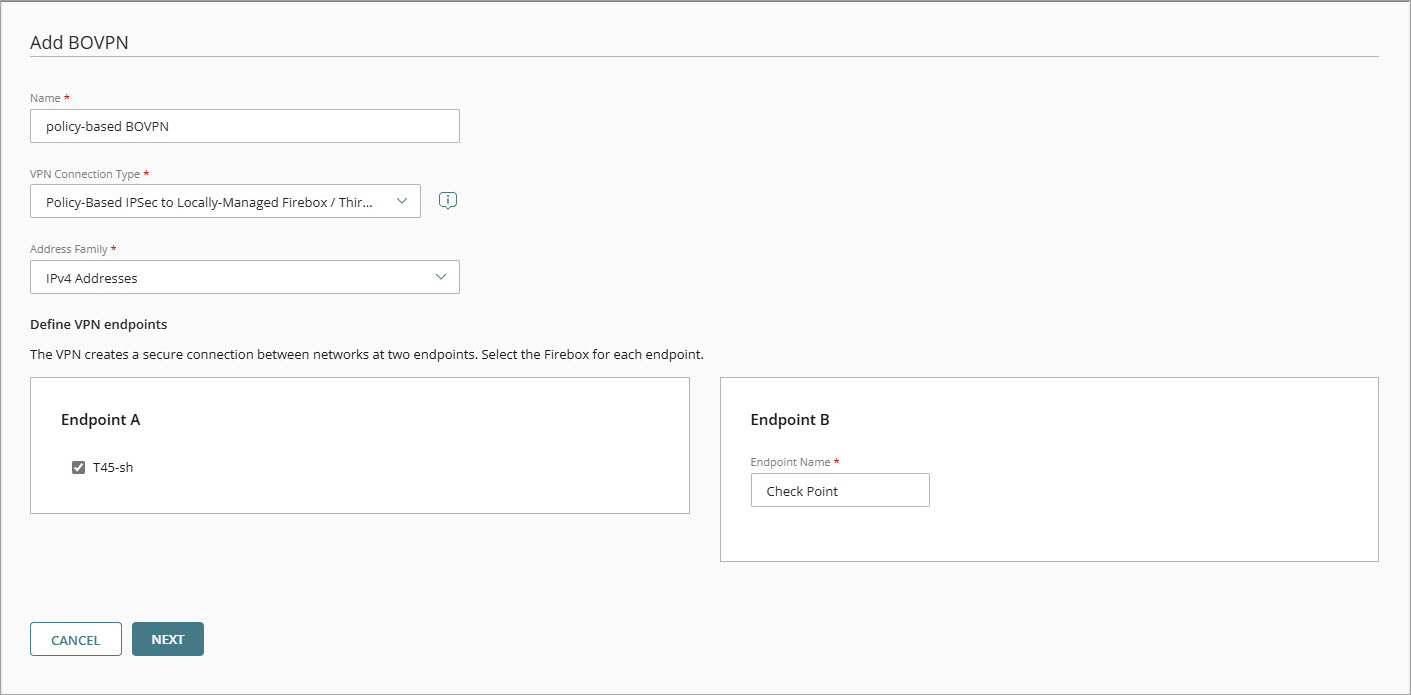




- Log in to Fireware Web UI.
- Select VPN > Branch Office VPN.
The Branch Office VPN configuration page appears. - In the Gateways section, click Add.
The Gateway Endpoint Settings dialog box appears. - In the Gateway Name text box, type a name to identify this Branch Office VPN gateway.
- From the Address Family drop-down list, select IPv4 Addresses.
- In the Credential Method section, select Use Pre-Shared Key.
- In the adjacent text box, type the pre-shared key.
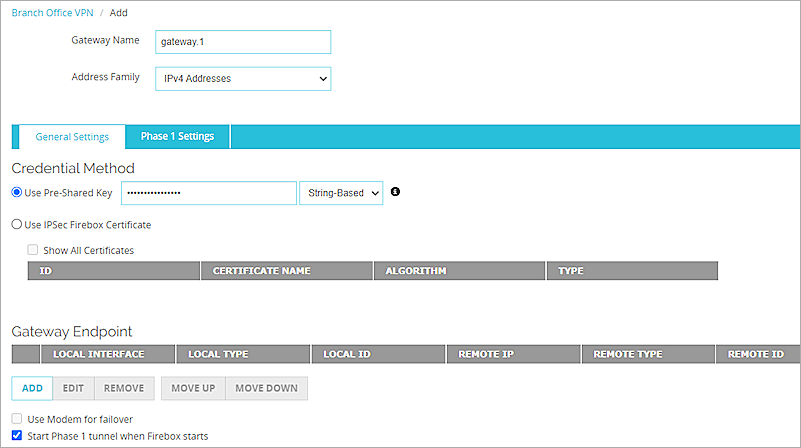
- In the Gateway Endpoint section, click Add.
The Gateway Endpoint Settings dialog box appears. - From the External Interface drop-down list, select External.
- From the Interface IP Address drop-down list, select Primary Interface IP Address.
The Primary Interface IP Address is the primary IP address you configured on the selected external interface. - Select By IP Address.
- In adjacent text box, type the primary IP address of the External Firebox interface.
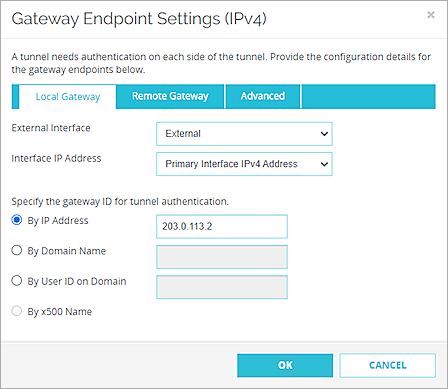
- Select the Remote Gateway tab.
- Select Static IP Address.
- In the adjacent text box, type the public IP address of your Check Point connection.
- Select By IP Address.
- In the adjacent text box, type the public IP address of your Check Point connection.
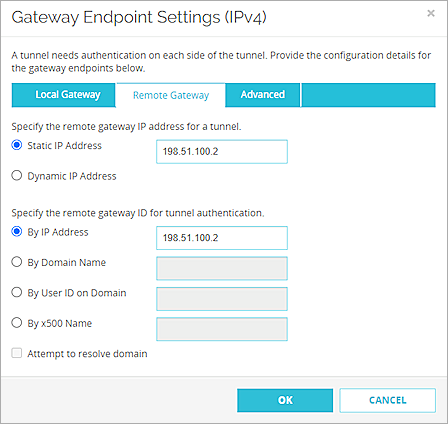
- Click OK.
- In the Gateway Endpoint section, select the Start Phase 1 tunnel when Firebox starts check box.
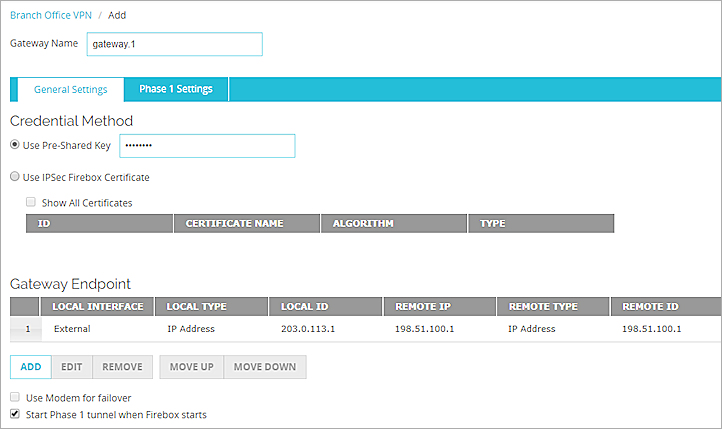
- Select the Phase 1 Settings tab.
- From the Version drop-down list, select IKEv2.
- For all other Phase 1 settings, keep the default values.
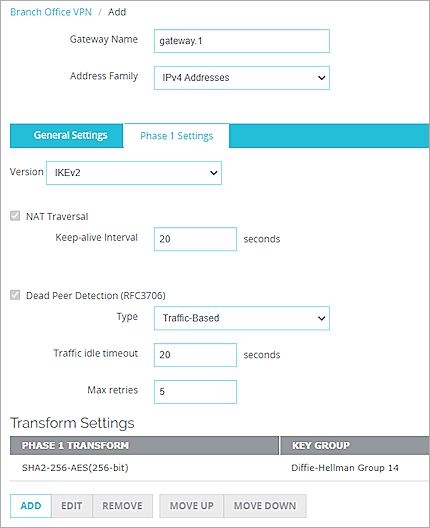
- Click Save.
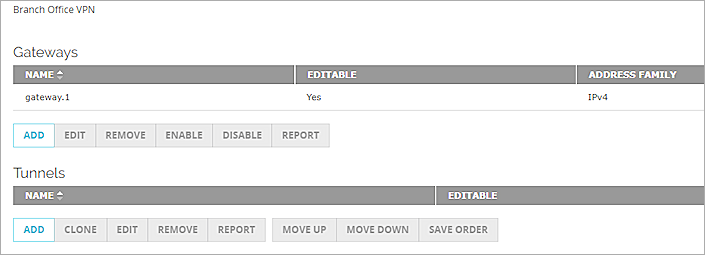
- In the Tunnels section, click Add.
The Branch Office VPN Tunnel configuration interface appears. - From the Gateway drop-down list, select the gateway that you added.
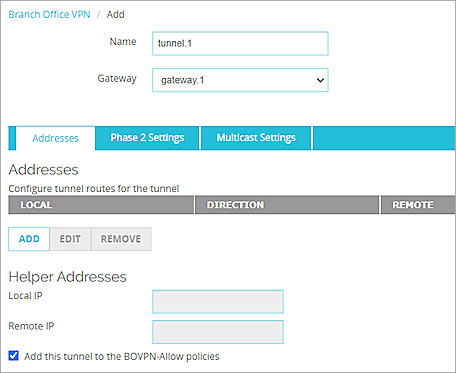
- In the Addresses section, click Add.
- In the Local IP section, from the Choose Type drop-down list, select Network IPv4.
- In the Network IP text box, type the local IP segment. This is the local network protected by the Firebox.
- In the Remote IP section, from the Choose Type drop-down list, select Network IPv4.
- In the Network IP text box, type the remote IP segment. This is the local network protected by the Check Point device.
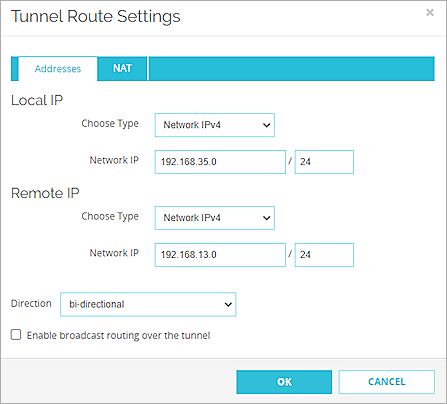
- Click OK.
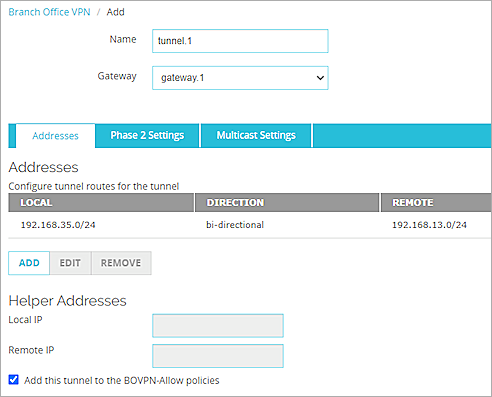
- Keep the default values for all of the Phase 2 Settings.
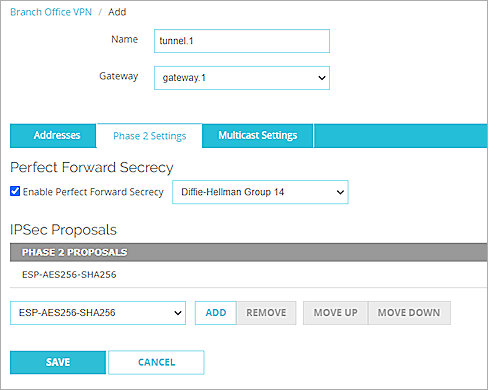
- Click Save.
For more information about Branch Office VPN configuration on the Firebox, go to Configure Manual BOVPN Gateways and Configure Manual BOVPN Tunnels.
Configure the Check Point Device
To configure the Check Point device, you must specify several settings.
- Log in to the Check Point 770 Web UI. The default IP address and port is https://192.168.1.1:4434.
- From the navigation menu, select Users & Objects > Network Resources > Network Objects.
- Click New.
- From the Type drop-down list, select Network.
- In the Network address text box, type the Network IP address, which is the internal network IP address protected by the WatchGuard Firebox.
- In the Subnet mask text box, type the subnet mask.
- In the Object name text box, type the object name.
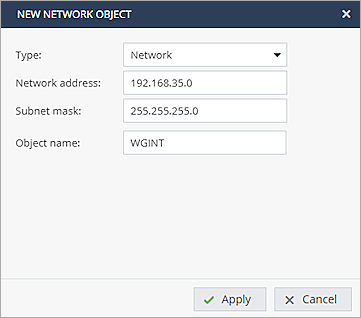
- Click Apply.
- Repeat Steps 3–8 to create another network Object, which is the internal Network IP address protected by the Check Point device.
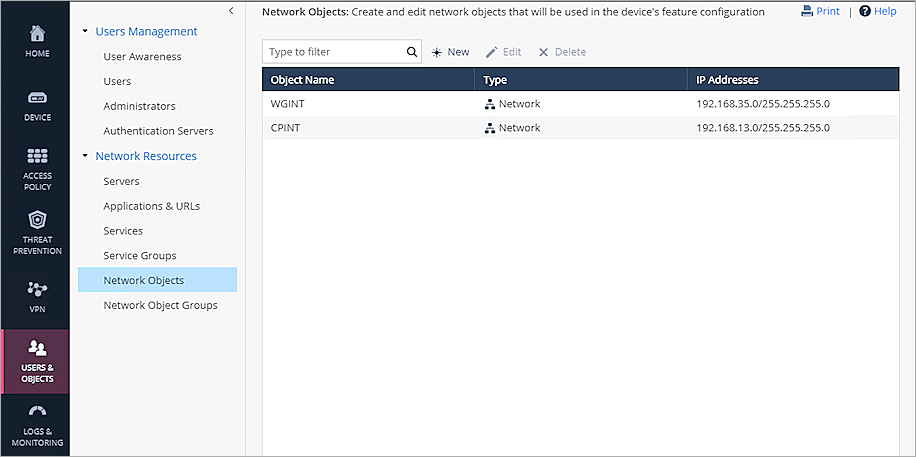
Next, configure the VPN Site:
- From the navigation menu, select VPN > Site to Site > VPN Sites.
- Click New to add new VPN site.
The New VPN Site window appears. - On the Remote Site tab, in the Site name text box, type the site name.
- From the Connection type drop-down list, select Host name or IP address.
- Select IP address and type the public IP address of remote device in text box.
- In the Authentication section, select Pre-shared secret.
- In the Password and Confirm text boxes, type the password.
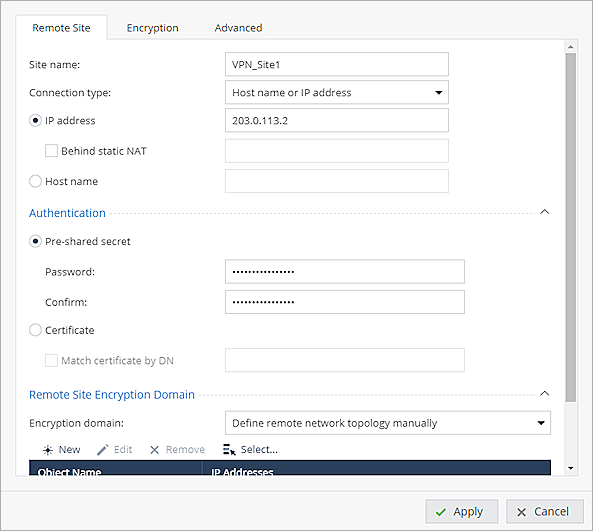
- From the Encryption domain drop-down list, select Define remote network topology manually.
- Click Select and select the WGINT object that you created.

- Select the Encryption tab.
- From the Encryption settings drop-down list, select Custom.
- In the IKE (Phase 1) section, from the Encryption drop-down list, select AES-256.
- From the Authentication drop-down list, select SHA256.
- From the Diffie-Hellman group support drop-down list, select Group 14 (2048 bit).
- In the IPSec (Phase 2)section, from the Encryption drop-down list, select AES-256.
- From the Authentication drop-down list, select SHA256.
- Select the Enable Perfect Forward Secrecy check box.
- From the Diffie-Hellman group support drop-down list, select Group 14 (2048 bit).
- Keep the default settings for all other options.
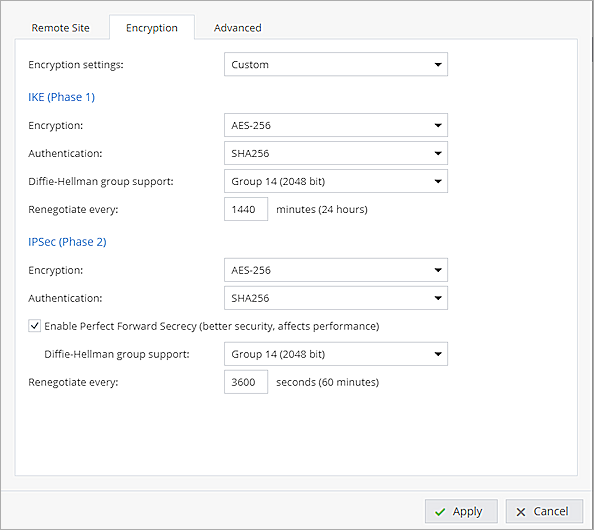
- Select the Advanced tab.
- Clear the Remote gateway is a Check Point Security Gateway check box.
- Select the Allow traffic to the internet from remote site through this gateway check box.
- From the Encryption method drop-down list, select IKEv2.
- For all other settings, keep the default values.
- Click Apply.
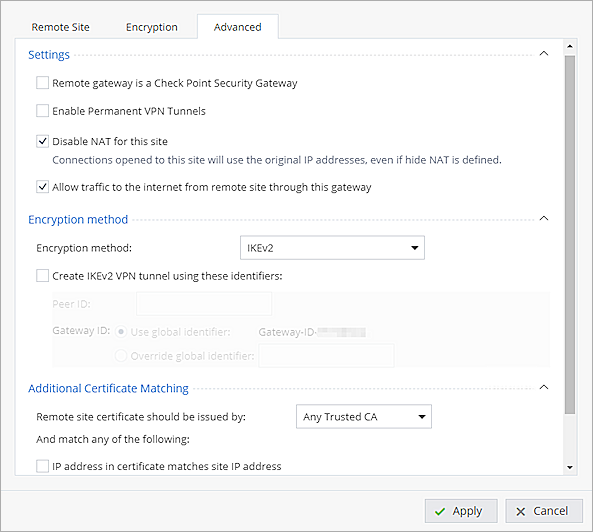
Next, configure the Access Policy:
- From the navigation menu, select Access Policy > Firewall > Policy.
- In the Incoming, Internal and VPN traffic section, click New.
- For the Source, select the CPINT object that you created.
- For the Destination, select the WGINT object that you created.
- Keep the default settings for all other options.
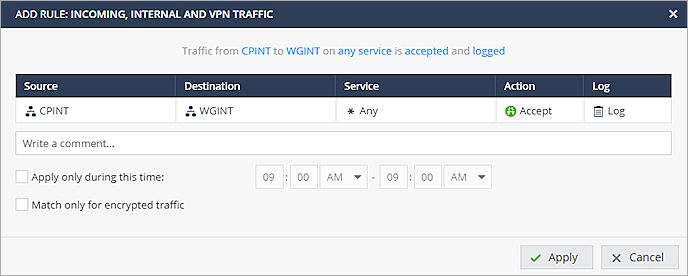
- Click Apply.
- Repeat Steps 2-6 to create another policy.
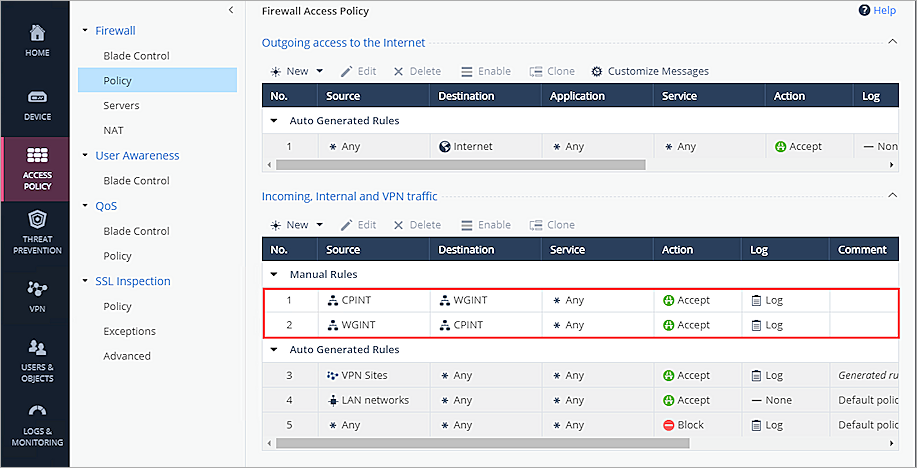
For more information about Check Point VPN configuration and supported IKE ciphers, go to Check Point 700/900 Appliances R77.20.87 Administration Guide.
Test the Integration
To verify the integration, from Fireware Web UI:
- Select System Status > VPN Statistics.
- Select the Branch Office VPN tab.
- Verify that the VPN is established.
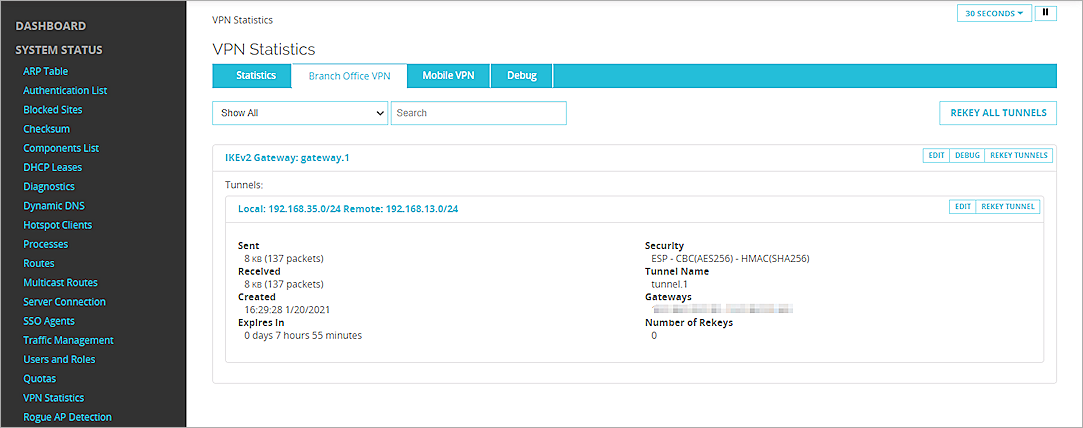
- Verify that Host 1 (behind the Firebox) and Host 2 (behind the Check Point device) can ping each other.
To verify the integration, from WatchGuard Cloud:
- Log in to WatchGuard Cloud.
- From the navigation menu, select Monitor > Devices.
If you log in with a Service Provider, you must select a Subscriber account from the Account Manager. - Select your cloud-managed Firebox, and select Live Status > VPN > Branch Office VPN.
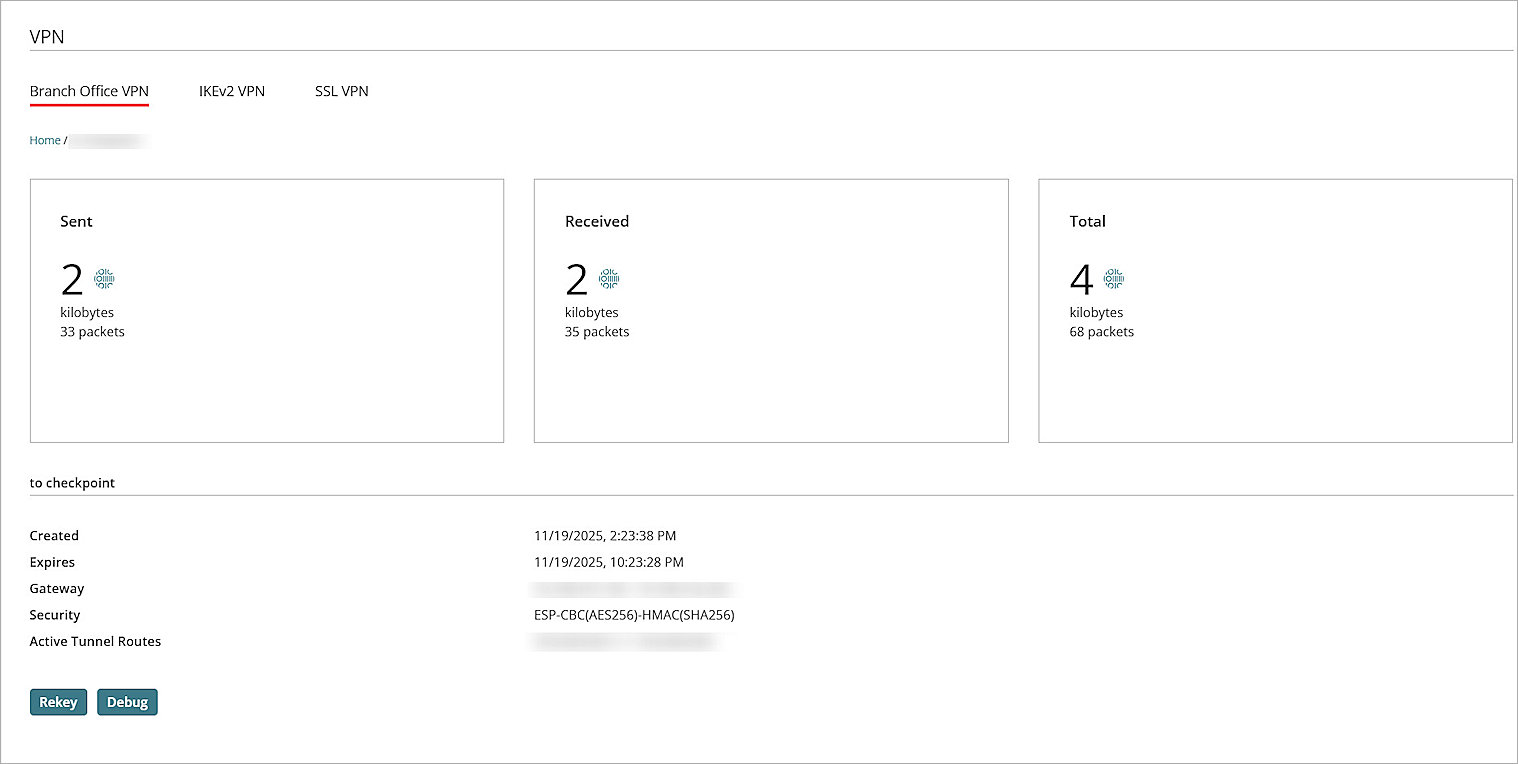
To verify the integration, from the Check Point site:
- Select VPN > VPN Tunnels.
- Verify the VPN tunnel is established.
